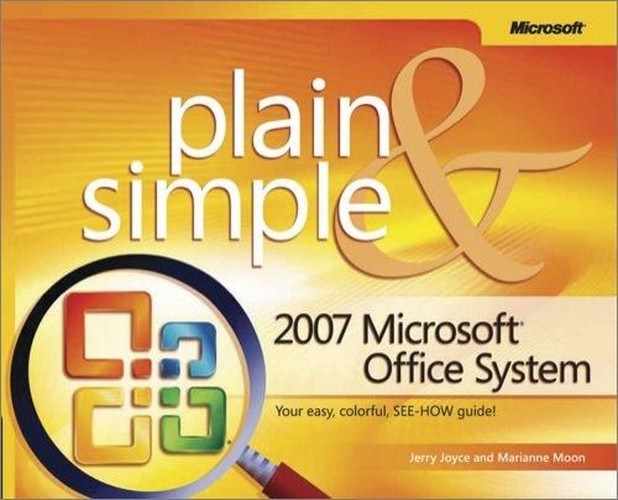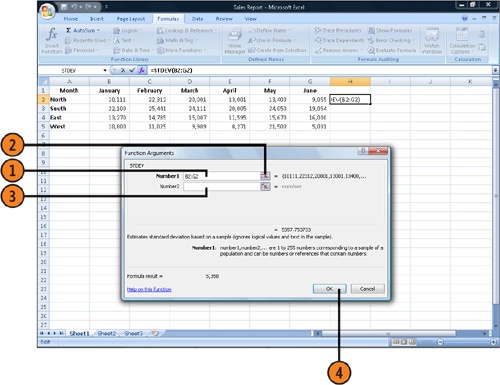Excel is jam-packed with functions that can make you look like a financial wizard or a mathematical genius (if you aren’t either or both of those already, of course!). Do you want to know the standard deviation of a series of numbers? What about the sum of the squares? How about calculating the number and amount of the payments needed to retire a loan over a certain period? If you’re a real stickler for precision, you can even use a function that returns the value of pi, accurate to 15 digits.
 Click in the cell in which you want the results of the function to be displayed.
Click in the cell in which you want the results of the function to be displayed. Click the Insert Function button. If the Formula bar isn’t displayed, click the Insert Function button on the Formulas tab.
Click the Insert Function button. If the Formula bar isn’t displayed, click the Insert Function button on the Formulas tab. In the Insert Function dialog box, type the name of the function or a description of the action you want to take, and press Enter.
In the Insert Function dialog box, type the name of the function or a description of the action you want to take, and press Enter. If the function isn’t listed, select a different category, and then select the function in the list.
If the function isn’t listed, select a different category, and then select the function in the list.
Tip
If you know the name of the function you want to use, click the button on the Formulas tab for the type of function, and then choose the function from the drop-down menu. To use a function that you used recently, click the Recently Used button on the Formulas tab, and choose the function from the drop-down menu.
 In the Function Arguments dialog box that appears, if a range is proposed, make sure it’s the one you want. If it isn’t, type any values that you want to enter directly, or type the cell references.
In the Function Arguments dialog box that appears, if a range is proposed, make sure it’s the one you want. If it isn’t, type any values that you want to enter directly, or type the cell references. To select cell ranges, click to minimize the dialog box and return to the worksheet. In the worksheet, select the cell or range of cells you want to use as an argument, or parameter, for the function, and then click the button again to restore the dialog box to its normal size.
To select cell ranges, click to minimize the dialog box and return to the worksheet. In the worksheet, select the cell or range of cells you want to use as an argument, or parameter, for the function, and then click the button again to restore the dialog box to its normal size. Complete any other arguments that are required for the function.
Complete any other arguments that are required for the function.
Tip
You can integrate more than one function into a formula, or you can include other elements—for example, standard arithmetic operations such as adding or multiplying by a number or a value in another cell.
Tip
Numerous functions don’t return a value but are logical tests instead. The powerful IF function, for example, returns one value you’ve set if the logical test is true and a second value if the logical test is false. Many other functions, such as ISBLANK, return true or false values only.
Tip
A function requires specific types of data, delivered in a specific order; these are the arguments for the function. Some functions don’t have any arguments—for example, NOW( ); some have a single argument—SQRT(number); and some have multiple arguments—NPER(rate,pmt,pv,fv,type). For information about the arguments for a function, click Help On This Function in the Function Arguments dialog box.


